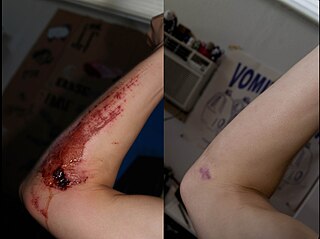 W
WMotorcycle safety is the study of the risks and dangers of motorcycling, and the approaches to mitigate that risk, focusing on motorcycle design, road design and traffic rules, rider training, and the cultural attitudes of motorcyclists and other road users.
 W
WThe Congressional Motorcycle Safety Caucus is a bipartisan caucus of the United States House of Representatives.
 W
WThis is a list of numbers of motorcycle deaths in U.S. by year from 1994 to 2014. United States motorcycle fatalities increased every year for 11 years after reaching a historic low of 2,116 fatalities in 1997, then increased to over 5,000 around 2008 and then plateaued in the 4 to 5 thousands range in the 2010s. In nine years motorcycle deaths more than doubled from the late 1990s to 2008. Despite providing less than 1% of miles driven, they made up 15% of traffic deaths in 2012.
 W
WThe Hurt Report, officially Motorcycle Accident Cause Factors and Identification of Countermeasures, was a motorcycle safety study conducted in the United States, initiated in 1976 and published in 1981. The report is named after its primary author, Professor Harry Hurt.
 W
WLane splitting is riding a bicycle or motorcycle between lanes or rows of slow moving or stopped traffic moving in the same direction. It is sometimes called whitelining, or stripe-riding. This allows riders to save time, bypassing traffic congestion, and may also be safer than stopping behind stationary vehicles.
 W
WThis list of countries by traffic-related death rate shows the annual number of road fatalities per capita per year, per number of motor vehicles, and per vehicle-km in some countries in the year the data was collected.
 W
WThe MAIDS report is a large-scale, comprehensive study of Powered Two Wheelers accidents carried out across five European countries, using both accident and exposure cases, as was done in the Hurt Report, and following the standards of OECD. Starting in September, 1999, over 2000 variables were coded in each of 921 accidents, and exposure data was collected on an additional 923 cases, collected at five locations in France, Germany, Netherlands, Spain and Italy. The investigation was carried out under the auspices of the Association of European Motorcycle Manufacturers (ACEM) with the support of the European Commission
 W
WMotorcycle braking systems have varied throughout time, as motorcycles evolved from bicycles with an engine attached, to the 220 mph (350 km/h) prototype motorcycles seen racing in MotoGP. Most systems work by converting kinetic energy into thermal energy (heat) by friction. On motorcycles, approximately 70% of the braking effort is performed by the front brake. This however can vary for individual motorcycles; longer-wheelbase types having more weight biased rearward, such as cruisers and tourers, can have a`greater effort applied by the rear brake. In contrast, sports bikes with a shorter wheelbase and more vertical fork geometry can tolerate higher front braking loads. For these reasons, motorcycles tend to have a vastly more powerful front brake compared to the rear.
 W
WRoad rash is a colloquial term for skin injury caused by abrasion with road surfaces, often as a consequence of cycling and motorcycling accidents. It may also result from running, inline skating, roller skating, skateboarding, and longboarding accidents.